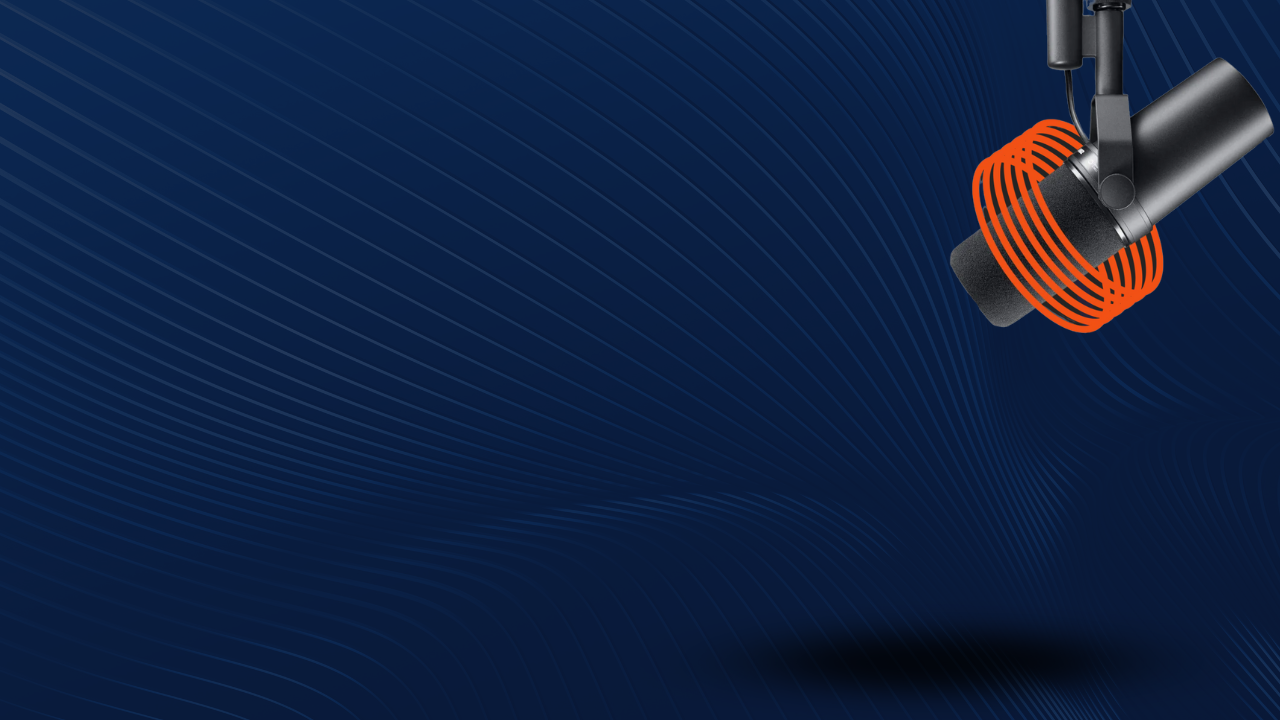This Week in the Business of Podcasting
It’s the final Download Recap of November! Before I disappear to hard-boil a lot of eggs in preparation for two gatherings’ worth of deviled eggs, let’s round up the stories from this week. (The secret to elevating traditional deviled eggs is smidge of vinegar in the filling, by the way)

Transparency. Performance. Automation.
Implications from Spotify’s New ‘Creators’ Platform Rebrand
This Thursday, Sounds Profitable Bryan Barletta reflected on last week’s announcement that Spotify for Podcasters has been rebranded to Spotify for Creators, along with the launch of a new monetization scheme on the platform that removes dynamically-inserted ads from video podcasts viewed from a Spotify Premium account. A quote from Barletta:
“This program really solidifies what Spotify’s attempt at video will be and sees them doubling down further on Premium subscriptions, their main source of revenue. And while it’s easy to view this as Spotify de-prioritizing Podcasting, from changing the platform to Spotify for Creators and challenging RSS delivery on video and audio, this announcement wasn’t for (most of) us. It was a flag in the sand, telling video creators that Spotify is now open to them, with no obligation to create an audio-only version.”
With this move, Spotify further builds out the app to be a place that consumes more of the user’s time. Especially when the term ‘podcasting’ takes on such broad meaning. As of Barletta writing the article, the 19th most popular video podcast on the entire platform was a feed simply called “Markiplier” in which the Distractable network hosts a spinoff podcast that’s largely gameplay footage of Markiplier playing the game PowerWash Simulator with friends.. When YouTube announced podcasts would get a carved out home within the YouTube ecosystem, it was an invitation for the podcasting industry to have a place there. The same is true for Spotify. Video content labeled as a podcast can take advantage of podcasting’s hype, for better or worse.
While the announcement isn’t destined to flip podcast advertising upside down, it does highlight the industry lacks solid solutions for publishers who will go down a multi-platform path and distribute into walled gardens like Spotify. For more commentary in the same vein, PAVE Studios founder Max Cutler has a new article titled Adapt or Get Left Behind: The Future of Podcasting is Multi-Platform.
Audible Now Accessible from Amazon Music Unlimited
As of last Tuesday, Amazon Music Unlimited subscribers in the U.S., U.K., and Canada now have access to the Audible audiobook library and can listen to one book per month at no additional cost. After the next billing cycle, selected audiobooks are still available to stream. Users that want to go beyond the single title a month either have the option to also start an Audible membership or purchase titles a la carte within the Audible app.
New Report Examines Video’s Rise in Podcasting
Last Thursday, Tom Webster and Crooked Media VP of Sales Giancarlo Bizzaro debuted a new study built from data collected in the comprehensive Podcast Landscape 2024 survey of 5,071 Americans. The new report, Video’s Rise in Podcasting: Shaping the Future of Engagement and Consumption Trends, focuses on Audio Primes and Video Primes, subsects of the overall respondent population that spend 75% of their podcast consumption time with that chosen medium. Quote from the summary findings:
“What separates Video Primes from Audio Primes is the amount of podcast content they consume –while 19% of Audio Primes fall into the heaviest usage category (9+ hours of podcast content per week), 33% of Video Primes are heavy users of podcasting.”
When asked how they discovered their favorite podcasts, Video Primes have YouTube in the lead as the top answer for 66% of respondents, with internet searches in second place at 24% and Instagram at 20%. For Audio Primes the top three’s a little different. YouTube still firmly takes the top position with 48%, followed by Facebook and Spotify tied for second place at 14%.
While Audio Primes clearly prefer to largely consume podcasts as audio, they’re still shopping with their eyes, as the YouTube stat shows. That, and YouTube’s ease of discovery. When asked how easy or difficult it was to find the last podcast respondents discovered, 31% of Audio Primes said “very easy.” 41% of Video Primes said “very easy.”
A key finding of the report is the idea that there isn’t an “audio versus video” dichotomy with consumers. Video Primes are still consuming podcasts as audio, and they’re having an easier time of finding new shows, which can be attributed to the discovery process in the platforms and apps they’re using.
How brands are redefining creativity in podcast ads by Matt Casey
This Wednesday from Matt Casey at AdAge. Podcast advertising has evolved quite a bit over the industry’s two decades of development. Casey’s article takes a look at the general state of modern podcast advertising before drilling down to examples of campaigns and strategies implemented by companies like Audacy and Tenderfoot TV. A quote from the article:
“The journey for podcast advertisers has been an exciting one — from the early days of the first host reads to today, when innovative brands are pushing creative boundaries and captivating with fresh, engaging experiences for listeners. Marketers are delivering creative activations across channels, revolutionizing podcast advertising and forging authentic connections with hosts and creators.”
Tactics include next-generation host-read ads like Tenderfoot TV’s Up and Vanished’s Liquid I.V. ads that used audio fiction-level sound design and building a narrative around the host using Liquid I.V. while researching the season’s stories in Alaska to elevate a simple host-read into what feels like content from the show. For visual pop, the article highlights Audacy’s Enhanced Video Units that add animations, graphics, and urls/QR codes to standard video podcast host-read segments.
Podcasting is Global – Research Should Be Too by Paul Riismandel
Last Wednesday from Signal Hill Insights, CEO Paul Riismandel encouraged podcast data studies to get global. With podcasting’s worldwide growth as a medium, it’s time to acknowledge that while the United States is one of the largest podcast markets, the industry should not consider it the default when doing research on podcasting overall. Local cultural and socioeconomic factors influence how and why people consume podcasts and engage with advertisers, which means extrapolating findings from one part of the world to another market won’t work well.
For example: YouTube is lauded as the top platform for consuming podcasts in the U.S with 34% of listeners saying they use it the most, compared to Spotify at 27%. However, Australian data from Triton Digital’s Podcast Metrics Demo+ survey shows Spotify is firmly in the lead at 40% according to monthly podcast consumers aged 18+, and YouTube at only 24%. Said Riismandel of the data, “It’s not a trivial difference, and something to take into account if you’re building a podcast audience strategy Down Under. You can’t assume that the trends we see in the States are playing out the same way elsewhere”.
As podcasting continues its growth, a global outlook when conducting research is vital.
Quick Hits
While they may not be top story material, the articles below from this week are definitely worth your time:
- Magellan AI Top podcast advertisers – October 2024
- The FTC Thinks Data Clean Rooms May Have A Few Dusty Corners by Allison Schiff An explanation of the FTC’s recent blog post warning against seeing data clean rooms as a get-out-of-jail-free card.
- Apple Podcasts top shows for 2024 by James Cridland Podnews reports on the top shows on Apple Podcasts this year.
- BBC Studios Taps Triton Digital to Scale Global Audio Growth Outside the UK The two companies are partnering to grow the BBC’s global reach utilizing Triton Digital’s Audio Marketplace













































































































































































































